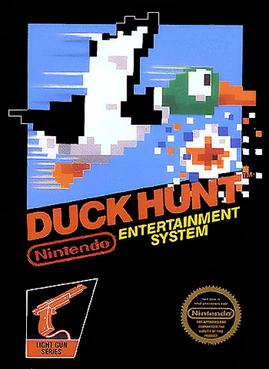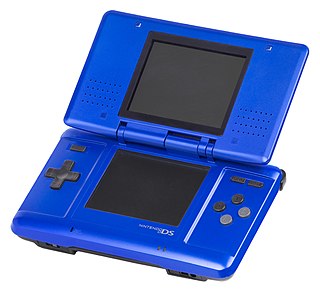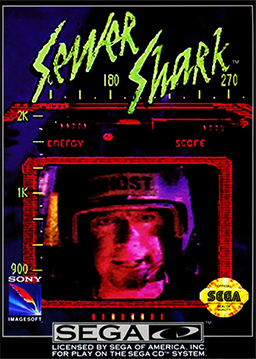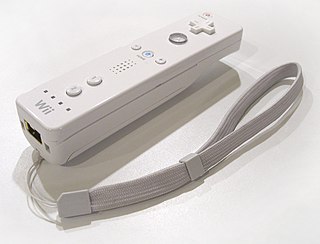Related Research Articles

Atari is a brand name that has been owned by several entities since its inception in 1972. It is currently owned by French company Atari SA through a subsidiary named Atari Interactive. The original Atari, Inc., founded in Sunnyvale, California, USA in 1972 by Nolan Bushnell and Ted Dabney, was a pioneer in arcade games, home video game consoles, and home computers. The company's products, such as Pong and the Atari 2600, helped define the electronic entertainment industry from the 1970s to the mid-1980s.

The Atari Jaguar is a home video game console developed by Atari Corporation and released in North America in November 1993. Part of the fifth generation of video game consoles, it competed with the 16-bit Sega Genesis, the Super NES and the 32-bit 3DO Interactive Multiplayer that launched the same year. Powered by two custom 32-bit processors – Tom and Jerry – in addition to a Motorola 68000, Atari marketed it as the world's first 64-bit game system, emphasizing its 64-bit bus used by the blitter. The Jaguar launched with Cybermorph as the pack-in game, which received divisive reviews. The system's library ultimately comprised only 50 licensed games.

The Atari Lynx is an 8-bit fourth-generation hand-held game console released by Atari Corporation in September 1989 in North America and 1990 in Europe and Japan. It was the first handheld game console with a color liquid-crystal display. Powered by a 16 MHz 65C02 8-bit CPU and a custom 16-bit blitter, the Lynx was more advanced than Nintendo's monochrome Game Boy, released two months earlier. It also competed with Sega's Game Gear and NEC's TurboExpress, released the following year.

Coleco Industries, Inc. was an American company founded in 1932 by Maurice Greenberg as The Connecticut Leather Company. It was a successful toy company in the 1980s, mass-producing versions of Cabbage Patch Kids dolls and its video game consoles, the Coleco Telstar dedicated consoles and ColecoVision. While the company ceased operations in 1988 as a result of bankruptcy, the Coleco brand was revived in 2005, and remains active to this day.

Duck Hunt is a 1984 light gun shooter video game developed and published by Nintendo for the Nintendo Entertainment System (NES) video game console and the Nintendo Vs. System arcade hardware. The game was first released in April 1984, in Japan for the Family Computer (Famicom) console and in North America as an arcade game. It became a launch game for the NES in North America in October 1985, and was re-released in Europe two years later.

The Wii is a home video game console developed and marketed by Nintendo. It was released on November 19, 2006, in North America and in December 2006 for most other regions of the world. It is Nintendo's fifth major home game console, following the GameCube and is a seventh-generation console alongside Microsoft's Xbox 360 and Sony's PlayStation 3.

The Nintendo DS is a foldable handheld game console produced by Nintendo, released globally across 2004 and 2005. The DS, an initialism for "Developers' System" or "Dual Screen", introduced distinctive new features to handheld games: two LCD screens working in tandem, a built-in microphone and support for wireless connectivity. Both screens are encompassed within a clamshell design similar to the Game Boy Advance SP. The Nintendo DS also features the ability for multiple DS consoles to directly interact with each other over Wi-Fi within a short range without the need to connect to an existing wireless network. Alternatively, they could interact online using the now-defunct Nintendo Wi-Fi Connection service. Its main competitor was Sony's PlayStation Portable during the seventh generation of video game consoles.
The fifth generation era refers to computer and video games, video game consoles, and handheld gaming consoles dating from approximately October 4, 1993, to March 23, 2006. For home consoles, the best-selling console was the Sony PlayStation, followed by the Nintendo 64, and then the Sega Saturn. The PlayStation also had a redesigned version, the PSone, which was launched on July 7, 2000.

Sewer Shark is a first-person rail shooter video game, and is the first on a home console to use full motion video for its primary gameplay. It was originally slated to be the flagship product in Hasbro's Control-Vision video game system, which would use VHS tapes as its medium. However, Hasbro cancelled the Control-Vision platform, and Digital Pictures later developed the game for the Sega CD expansion unit. Sewer Shark is one of the first titles for the Sega CD and one of its best-selling games, leading Sega to eventually bundle it with Sega CD units. It was later ported and released for the 3DO in 1994. A port was also planned for the SNES-CD, but that system was cancelled.

Wheel of Fortune is an American television game show created by Merv Griffin, premiering in 1975 with a syndicated version airing in 1983. Since 1986, the syndicated version has been adapted into various video games spanning numerous hardware generations. Most versions released in the 20th century were published by GameTek, which filed for Chapter 11 bankruptcy protection in 1998.
Atari Corporation was an American manufacturer of computers and video game consoles. It was founded by Jack Tramiel on May 17, 1984, as Tramel Technology, Ltd., but then took on the Atari name less than two months later when Warner Communications sold the home computing and game console assets of Atari, Inc. to Tramiel. Its chief products were the Atari ST, Atari XE, Atari 7800, Atari Lynx and Atari Jaguar.
The Xbox 360 launch marked the release of the first high-profile seventh generation video game console. It was Microsoft's second foray in console development succeeding their 2001 launch of the original Xbox.

The Wii Remote, also known colloquially as the Wiimote, is the primary game controller for Nintendo's Wii home video game console. An essential capability of the Wii Remote is its motion sensing capability, which allows the user to interact with and manipulate items on screen via motion sensing, gesture recognition, and pointing which is used for the console, using accelerometer and optical sensor technology. It is expandable by adding attachments. The attachment bundled with the Wii console is the Nunchuk, which complements the Wii Remote by providing functions similar to those in gamepad controllers. Some other attachments include the Classic Controller, Wii Zapper, and the Wii Wheel, which has originally been used for the racing game, Mario Kart Wii.
Hasbro Family Game Night is a series of video games that adapt board games manufactured by Hasbro.

Xbox is a video gaming brand that consists of five home video game consoles, as well as applications (games), streaming service Xbox Cloud Gaming, and online services such as the Xbox network and Xbox Game Pass. The brand is produced by Microsoft Gaming, a division of Microsoft.

The Xbox One is a home video game console developed by Microsoft. Announced in May 2013, it is the successor to Xbox 360 and the third console in the Xbox series. It was first released in North America, parts of Europe, Australia, and South America in November 2013 and in Japan, China, and other European countries in September 2014. It is the first Xbox game console to be released in China, specifically in the Shanghai Free-Trade Zone. Microsoft marketed the device as an "all-in-one entertainment system", hence the name "Xbox One". An eighth-generation console, it mainly competed against Sony's PlayStation 4 and Nintendo's Wii U and later the Switch.

The Atari VCS is a home video game console produced by Atari, Inc. While its physical design is intended to pay homage to the Atari 2600, the new Atari VCS plays modern games and streaming entertainment via a Linux-based operating system called AtariOS that will allow users to download and install other compatible games, including those compatible with Windows 10. The system shares a name with Atari, Inc.'s 1977 Video Computer System, usually shortened to VCS, which was renamed to the Atari 2600 in late 1982.